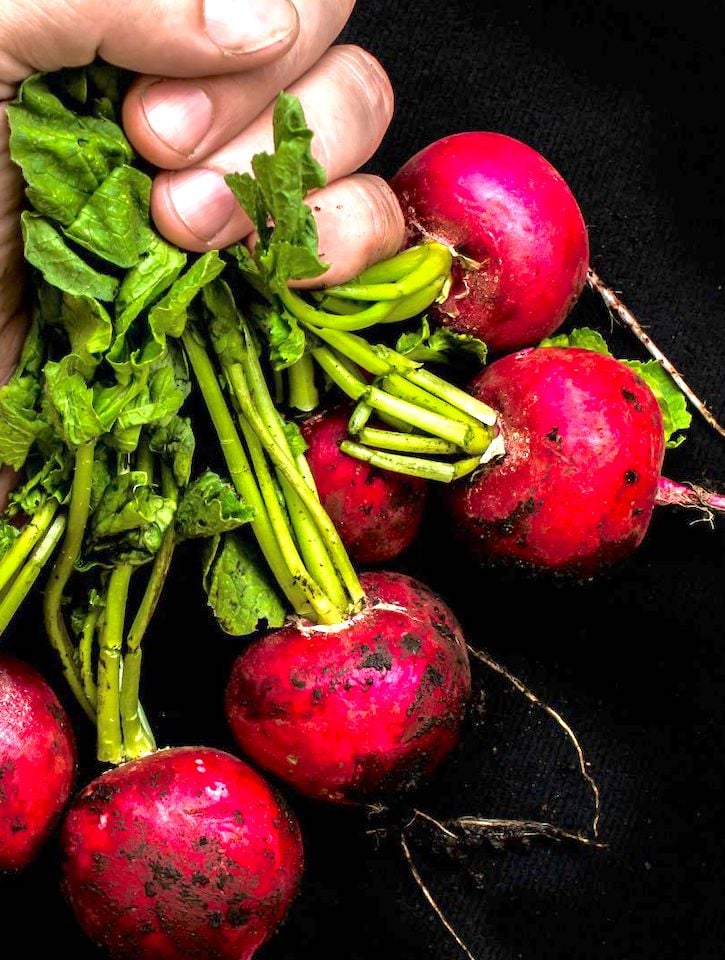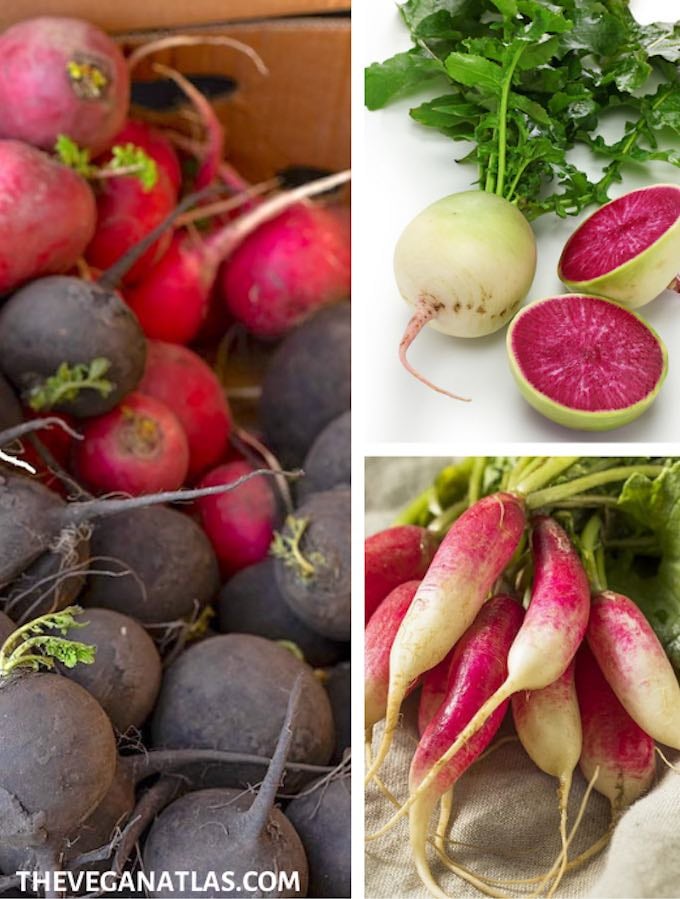The radish (raphanus sativus) is a simple vegetable to cultivate and has a broad range of root colors, forms, and sizes. That make it a perfect addition to salads and other dishes. Here we’ll see how to grow radishes in containers in 5 easy steps.

This useful vegetable can be cultivated in window boxes or small pots on a patio, interplanted among slower-growing vegetable rows in the garden, or even germinated year-round in a pot on the kitchen counter, depending on the radish variety you wish to grow.
For beginner gardeners, radishes are a wonderful choice because they often germinate in around 3 to 7 days. Then, they can be easily repotted and have a harvesting time of 28 days.
The entire body of the radish plant can be consumed. Although leaves can also be utilized raw or lightly cooked, the roots are the most valued part of the plant for their crunch and unique bite.
Spring and summer varieties of radish are frequently consumed raw, while winter varieties can be roasted, pickled, dried, or preserved for use in sauces, stews, and soups. For just-harvested consumption, any cultivar is suitable.
Follow these 5 easy steps for how to grow radishes in containers (aka pots) to have a successful yield. Radishes are classic early vegetables for the spring garden, so these steps will hone your gardening skills and knowledge for extending their season and availability.

Step 1 – Choosing the right radish type
Radish plants can be broadly categorized into these three groups — spring, summer, and fall/winter. This classification is based on when crops are grown and harvested.
- Early spring is the best time to plant spring radish varieties, which grow best in cold weather and are often ready for harvest in 3 to 4 weeks.
- Summer radish varieties are typically available for harvest in 6 to 8 weeks after being sown in late spring and can withstand the summer’s early heat.
- Fall/winter radish varieties are often harvested after 8 weeks or more after being sown in the late summer when the temperature cools, these are mainly the daikon variety and are mainly grown in Asia.
So, the choice depends on when you want the radishes to grow.
Step 2 – Choosing the right place for your pots
Radishes require loose, well-drained soil, as well as full light for at least six hours each day. Spring and summer varieties can also be planted with less sun if other plants do not shadow them out. Avoid the overshadowing of your radish pots from other plants.
Radishes sprouts can also be grown for fresh consumption in kitchen jars. Most seed producers include sprouting instructions in their catalogs or on their websites.
Step 3 – Planting the radishes
Radish seeds need to be planted straight into 1/2-inch-deep soil, spaced about 1/2 inches apart as well. Add 1/2 inches of soil to the pot to cover the seeds and fill in.
For spring and summer varieties, radishes should be planted 1 to 2 inches apart, while winter radishes should be 18 inches apart.
Water the soil gently, but not so much soak the seeds; as mentioned, radishes love well-drained soil. Gardenzoo suggests using loose potting soil that’s rich in nutrients. By planting radishes in pots and containers as opposed to long single rows, you may reduce the amount of unplanted ground and prevent weed seeds from germinating and stealing nutrients.
Step 4 – Maintaining radishes in pots
As the seedlings grow, keep the soil evenly moist although not overly soggy. The radish roots may split or become extremely hot due to uneven irrigation.
Radishes can sometimes grow woody and/or too spicy in hot and dry conditions. Spring and summer varieties start to bloom when left in the pots without any extra maintenance.
When the radish plants are 2 inches tall, thin them so that plants of the spring or summer varieties are separated by 1 to 2 inches, and winter varieties are separated by 2 to 6 inches.

Step 5 – Harvesting and storing radishes
The choice as to root size, texture, and flavor determines when to harvest the different radish varieties.
Since radishes can mature quickly, sampling over the course of a few days will enable you to select the ideal harvest time.
Generally speaking, a radish gets spicier the longer it grows. Winter types should harvest and keep at 32°F and 95% humidity.
Store the radish leaves in plastic bags. However, they don’t last as long as the radish itself, so it’s recommended that you use them soon after harvesting. Rinse well, as the leaves tend to trap dirt, and use as you would other tender greens.
Radishes should be stored whole in the refrigerator in plastic bags or storage containers. Rinse well before slicing and using. They keep well for quite some time stored this way; the larger the radish, the longer it will keep.
Contributed by Tony Manhart: Tony is the founder and editor in chief at Growertoday. Tony’s enthusiasm and rich experience in all things related to growing plants have led him to share his knowledge with gardening aficionados all over the world. When he is not working around his garden, Tony spends his time writing tips and tricks on various subjects related to plant cultivation and soil maintenance.
Also by Tony Manhart:


Leave a Reply